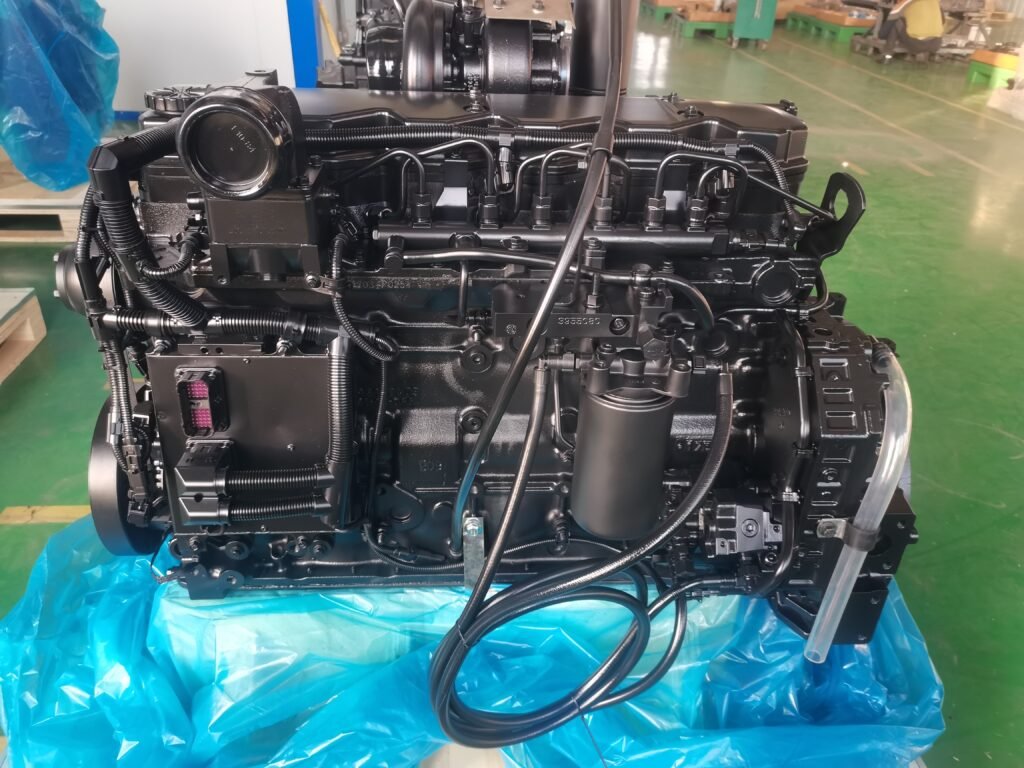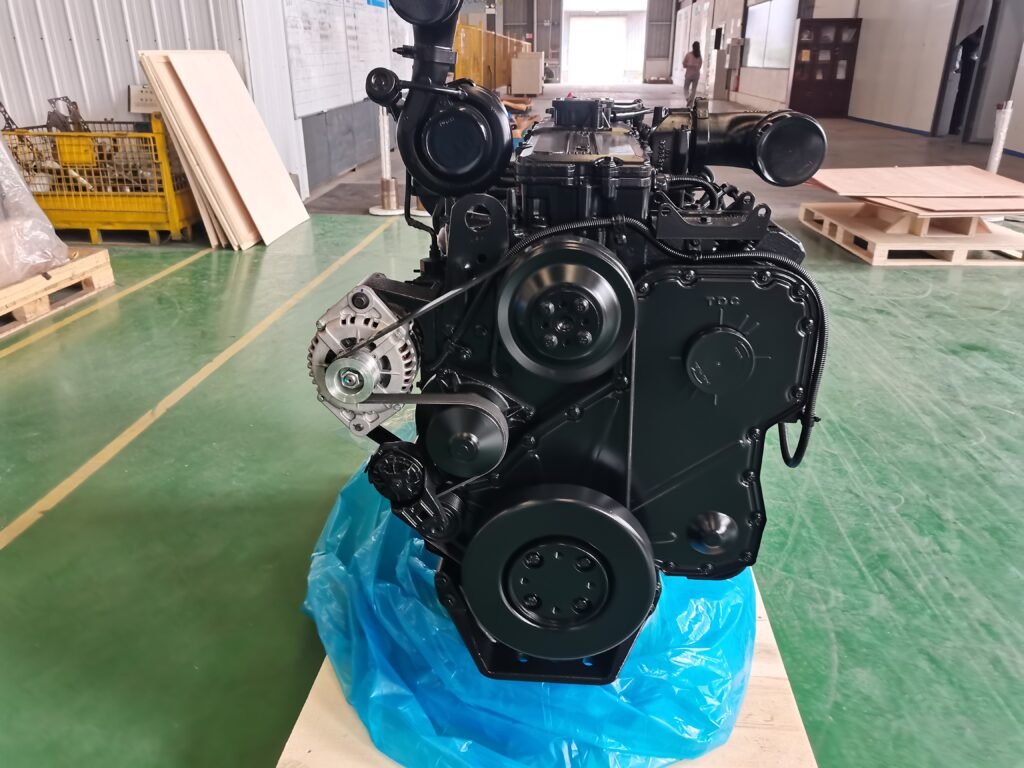
As global emissions regulations tighten, the race to develop cleaner, more efficient engines has intensified. Cummins Inc. stands out in this competitive landscape by delivering cutting-edge technologies that not only meet but often exceed industry standards. This article compares Cummins’ emissions performance against key competitors—including Caterpillar, Detroit Diesel, and Volvo Penta—highlighting innovations in aftertreatment systems, fuel flexibility, and lifecycle sustainability that position Cummins as a leader in the clean power revolution.
1. Aftertreatment Technology: SCR and DPF Efficiency
Cummins’ Selective Catalytic Reduction (SCR) systems are widely regarded as the most advanced in the industry, achieving 96% NOx reduction in engines like the X15 Efficiency Series. By contrast, competitors such as Detroit Diesel’s DD15 rely on combined SCR and exhaust gas recirculation (EGR), which reduces NOx by 90% but increases fuel consumption by 3–5%.
Cummins’ Diesel Particulate Filter (DPF) also outperforms rivals in longevity and maintenance intervals. While Caterpillar’s C7.1 engine requires DPF cleaning every 3,000 hours, Cummins’ B6.7 extends this interval to 4,500 hours due to proprietary ash-handling designs. This reduces downtime and operational costs for fleets.
2. Fuel Flexibility: Biodiesel and Renewable Diesel Readiness
Cummins leads in multi-fuel compatibility, with most post-2007 engines certified for B20 biodiesel blends and 100% renewable diesel (HVO). Competitors lag significantly:
– Volvo Penta’s D13 engine only supports B7 biodiesel.
– Caterpillar’s C9.3B limits renewable diesel blends to 30%.
A 2023 study by the National Renewable Energy Laboratory (NREL) found Cummins’ L9 diesel engine reduced lifecycle CO₂ emissions by 28% using B20, compared to 12% for Volvo’s equivalent model.

3. Greenhouse Gas (GHG) Compliance: Meeting Global Standards
Cummins engines consistently meet the strictest global emissions standards, including Euro VII, EPA 2027, and CARB 2024. For example, the Cummins X12N natural gas engine achieves 90% lower NOx than the EPA’s 0.2 g/bhp-hr limit. Competitors like PACCAR’s MX-13 struggle with CARB compliance, often requiring costly retrofits.
Cummins’ Destination Zero strategy further differentiates it by targeting net-zero emissions across all products by 2050—a commitment unmatched by Detroit Diesel or Caterpillar.
4. Real-World Performance: Case Studies in Emission Reductions
– Transportation: UPS reported a 22% drop in NOx emissions after switching 1,000 delivery trucks to Cummins B6.7 engines with SCR, outperforming FedEx’s Volvo-powered fleet, which saw a 15% reduction.
– Marine: The Port of Los Angeles recorded a 45% decrease in particulate matter (PM) after adopting Cummins QSK95 engines, compared to a 30% reduction with Caterpillar’s 3516E engines.
– Agriculture: John Deere’s shift to Cummins X15 engines in combines reduced fuel use by 12% versus their previous Deutz AG-powered models.
5. Total Cost of Ownership: Maintenance and Longevity
Cummins’ engines are engineered for durability, with 1.2 million-mile lifespans for heavy-duty models like the X15—20% longer than Detroit Diesel’s Series 60. Key cost-saving advantages include:
– Extended Oil Change Intervals: Up to 75,000 miles with Cummins’ FleetGuard filters, versus 50,000 miles for Caterpillar.
– Predictive Maintenance: Cummins’ Connected Diagnostics alerts operators to issues before failures occur, reducing unplanned downtime by 30%. Competitors like Volvo rely on reactive systems.
6. Innovations in Hybrid and Zero-Emissions Tech
Cummins is outpacing competitors in bridging diesel and zero-emissions solutions:
– Hybrid Systems: The PowerDrive 6000 hybrid powertrain reduces fuel use by 35% in urban buses, outperforming Daimler’s Detroit DT12 Hybrid.
– Hydrogen Engines: Cummins’ X15H hydrogen combustion engine (500+ HP) is already in pilot testing, while Caterpillar’s hydrogen prototypes remain in early R&D.
– Battery Electric: Cummins’ Accelera™ division offers modular battery systems with 20% faster charging than Tesla’s Semi powertrain.

7. Competitor Weaknesses: Where Cummins Gains Ground
– Caterpillar: Relies on older EGR systems, leading to higher NOx and fuel consumption in models like the C15.
– Detroit Diesel: Limited renewable fuel compatibility and slower adoption of predictive analytics.
– Volvo Penta: Higher DEF consumption rates (7% vs. Cummins’ 5%) in their SCR systems.
Conclusion: Cummins’ Unmatched Leadership in Clean Power
Cummins’ emissions performance leadership stems from relentless innovation, holistic sustainability strategies, and a deep understanding of real-world fleet needs. By outperforming competitors in SCR efficiency, fuel flexibility, and total cost of ownership, Cummins provides businesses with a clear path to compliance and profitability in a carbon-constrained world.
As industries transition to zero-emissions, Cummins’ investments in hydrogen, hybrid systems, and digital solutions ensure it remains the partner of choice—proving that environmental responsibility and industrial competitiveness are not mutually exclusive.




No comment